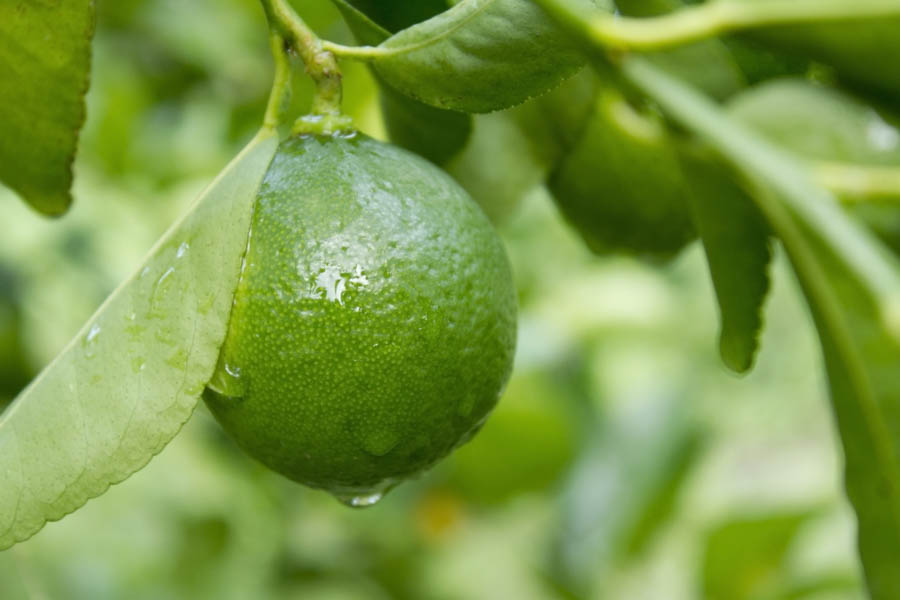Getting Started with Lime Trees in Mediterranean Climates

In Mediterranean climates such as California, lime trees are less commonly grown than other types of citrus. The regions in which limes can be successfully grown are fairly limited, as they are quite sensitive to cold temperatures.
Limes are small trees in the Citrus genus and the family Rutaceae, with many of its numerous plant members known for producing strongly aromatic, flavorful, or medicinal leaves and fruit. The most well-known type of lime is the Key lime, also called the Mexican lime, true lime, or West Indian lime. True limes are generally grown in Florida, Mexico, and the Caribbean. These limes are also known as “bartender’s limes,” as they are commonly found garnishing alcoholic beverages. True limes cannot tolerate frost; they are adapted to warm, tropical regions. While it is possible to grow true lime trees in containers with special care, many gardeners will not find it to be worth the effort.
Other varieties of limes tolerate wider ranges of temperature and are equally delicious, and are possibly more versatile in the kitchen. Varieties of limes that may be grown in the California home garden include the Bearss lime, Kaffir lime, or Australian Finger Lime. Sweet citrus in general require heat to develop high sugar content in fruits. Bearss limes are similar to lemons in that they are able to produce good-quality fruit in cooler climates, and are therefore more widely grown in California.
To produce well and maintain good health, lime trees need full sun and prefer locations sheltered from wind. When possible, plant lime trees on the south side of larger trees or other landscape features that can act as windbreaks for seasonal winds. Lime trees are much more sensitive to cold than other citrus. Give lime trees southern to western exposures. Dark surfaces such as walls also increase heat for winter citrus. Established lime trees generally tolerate the short periods of frost common in many of California’s coastal inland valleys; however, lime trees will start to have damage at temperatures around or below 32°F, with flowers being affected first, then fruits. Lime trees generally dislike prolonged cold temperatures. Avoid planting citrus at the bottom of slopes of where cold air collects. In some of California’s coastal inland valleys, an occasional winter is cold enough and long enough to cause limes to abort flowers, generally with the loss of some to all of the fruit crop. In especially hot inland coastal valleys, such as the San Fernando Valley in Southern California, limes may benefit from partial afternoon shade from July through September.
Don’t know your GardenZeus climate zone? Click here.
Other articles of interest:
GardenZeus Quick Tips: Harvesting Lemons
Getting Started With Citrus: Purchasing and Placing Your Citrus Trees